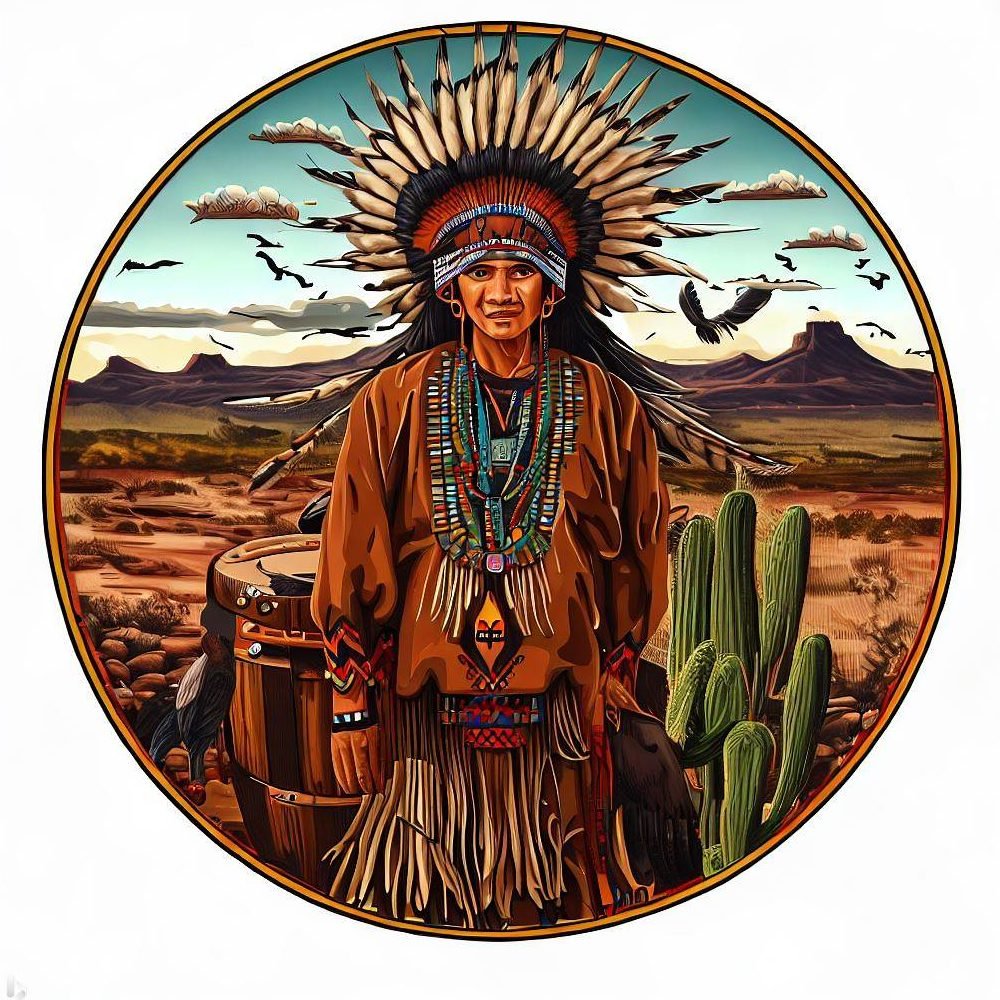Living Legends: Uncovering the Rich History and Legacy of the Apache People

The Apache people are a Native American tribe that has inhabited the Southwest United States for thousands of years. With a rich history, diverse cultures, and unique traditions, the Apache have much to offer in terms of understanding the complexities of indigenous life in North America. This article seeks to provide a comprehensive examination of the Apache, their history, culture, and interactions with other tribes and cultures, while addressing the gaps found in previous research.
The Apache people have ancestral roots in Alaska and Canada, from where they migrated to the Southwest United States, specifically the region between the Rocky Mountains and the Rio Grande. The Athabaskan migration, which began over a thousand years ago, played a significant role in the evolution of Apache tribes. This migration should be contextualized within broader indigenous migratory patterns across North America. The Apache were once part of a larger group of tribes known as the Athabaskan-speaking people. The Apache separated from this group and formed their own distinct identity as they migrated to the Southwest.
Apache Tribes and Territories
There are six distinct Apache tribes, each with its unique history and traditions. The Chiricahua Apache, Jicarilla Apache, Mescalero Apache, Western Apache, Lipan Apache, and Plains Apache all have their own customs, territories, and leaders. The Chiricahua Apache, for example, were known for their fierce resistance against the United States government in the late 19th century, led by Geronimo, who remains a revered figure among the Apache people today. The Jicarilla Apache were historically known for their nomadic lifestyle, while the Mescalero Apache adapted to the changing environment and became skilled farmers and ranchers. The Western Apache were a confederation of bands that occupied various regions of Arizona, while the Lipan Apache were a group that roamed across Texas and northern Mexico. The Plains Apache were a nomadic group that traveled between Texas and the Great Plains.
Language and Communication
The Apache language is a complex and nuanced language with different dialects spoken by various tribes. Efforts have been made to preserve and revitalize the language, which is considered an integral part of Apache culture. Oral tradition plays an important role in passing down history and values, with storytelling being a significant aspect of Apache communication. Apache sign language, known as Plains Indian Sign Language, was a common form of communication between different tribes and cultures.
Spirituality and Beliefs
Religion and spirituality are essential aspects of Apache life. The Apache believe in a Creator, and their creation stories are passed down through oral tradition. Spiritual ceremonies and rituals are significant events in Apache life, and they are often accompanied by music, dance, and prayer. Shamans and medicine men play an important role in Apache society as healers and spiritual leaders.
Art and Crafts
Apache art and crafts are a testament to their creativity and resourcefulness. Basketry is a prominent art form, with techniques and materials varying between tribes. Beadwork is another important craft, with intricate designs and patterns used to adorn clothing and other items. Pottery is also significant, with distinctive styles and techniques used by different Apache tribes.
Food and Lifestyle
Hunting and gathering were once a primary means of subsistence for Apache tribes. Traditional Apache foods included wild game, such as deer and buffalo, and wild plants and berries. Agriculture was also important for certain Apache tribes, who became skilled farmers and ranchers. The Apache kinship system and social organization were integral to their way of life, with extended families playing a significant role in Apache society.
Warfare and Conflicts
Apache warfare tactics and strategies were renowned for their effectiveness and adaptability. Notable battles and conflicts involving the Apache people include the Apache Wars, fought between the United States government and several Apache tribes in the late 19th century. To better understand the complexities of these wars, the root causes of the conflicts should be explored. The tensions and motivations that led to these wars arose from various factors, including land disputes, resource competition, and cultural differences.
Apache warriors played a crucial role in tribal society, and their bravery and skill in battle are still remembered and celebrated today. The impact of European colonization on Apache warfare cannot be understated, as the introduction of firearms and other technology changed the balance of power between different groups.
Notable Individuals
Several notable Apache individuals have left their mark on history and culture. Geronimo, the Chiricahua Apache leader, is perhaps the most famous of these figures, known for his fierce resistance against the United States government. Cochise, another Chiricahua Apache leader, played a significant role in Apache history and diplomacy. Mangas Coloradas, a chief of the Mimbreño Apache, was a respected leader who played a key role in Apache resistance. Lozen, a female warrior and spiritual leader, is also remembered for her bravery and strength. Victorio, a skilled tactician and leader, fought to protect Apache lands and people.
Relationships with Other Tribes and Cultures
The Apache had complex relationships with neighboring tribes and cultures. The Apache-Navajo connection, for example, was marked by shared language and culture, and the two groups often traded and intermarried. However, the relationships between the Apache and other indigenous tribes, such as the Comanche, Pueblo, and Ute, were characterized by both alliances and rivalries. These complex interactions greatly influenced the socio-political landscape of the Southwest.
The Apache also interacted with Spanish colonizers, with mixed results. The impact of American settlers on Apache lands and culture was significant, as conflicts and forced displacement became increasingly common. The Mexican-American War also had a profound impact on the Apache people, as they found themselves caught in the middle of the conflict.
Modern Apache Communities
Apache communities face many challenges in the modern world, including poverty, unemployment, and environmental issues. To understand these challenges, it is important to consider the systemic causes behind them. Factors such as historical trauma, forced displacement, and ongoing conflicts over land rights have contributed to the difficulties faced by Apache communities.
Education plays a crucial role in preserving Apache culture and language, with many communities working to revitalize and promote their traditions. Economic development and opportunities are also important for Apache communities, with many tribes investing in businesses and tourism. Environmental issues, such as water rights and land use, are ongoing concerns for Apache lands and resources.
Legal and Political Issues
Apache land rights and treaty history have been a source of ongoing conflict with the United States government. A more detailed discussion of the various policies and actions taken by the US government that have negatively affected the Apache people is needed to provide a comprehensive understanding of their ongoing struggles for sovereignty and self-determination. The Apache played a significant role in the American Indian Movement, advocating for greater sovereignty and self-determination.
Popular Culture and Media
The portrayal of Apache people in popular culture and media has been mixed, with many stereotypes and inaccuracies perpetuated over the years. However, there have been notable Apache artists, authors, and public figures who have helped to promote greater understanding and representation of Apache culture. Cultural preservation and representation remain important goals for the Apache people.
Conclusion
The Apache people have a rich and complex history, with diverse cultures and traditions that have evolved over time. Interactions with other tribes and cultures have shaped their experiences and influenced their way of life. Despite ongoing challenges and conflicts, Apache communities continue to thrive and work towards greater sovereignty and self-determination. By fostering a greater understanding of Apache history, culture, and experiences, and by addressing the gaps and limitations in previous research, we can promote a more inclusive and respectful society for all.
Bibliography
- Basso, K. H. (1996). Wisdom sits in places: Landscape and language among the Western Apache. University of New Mexico Press.
- Debo, A. (1989). Geronimo: The man, his time, his place (Vol. 35). University of Oklahoma Press.
- Goodwin, G. (1994). The social organization of the Western Apache. University of Arizona Press.
- Mails, Thomas E. (1974). The People Called Apache. Prentice-Hall Publishing.
